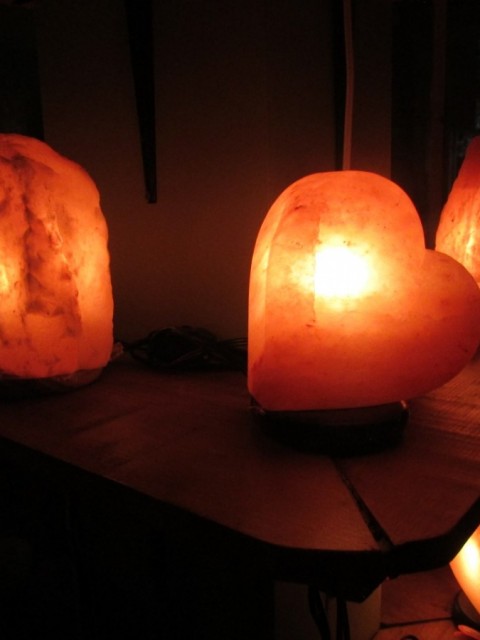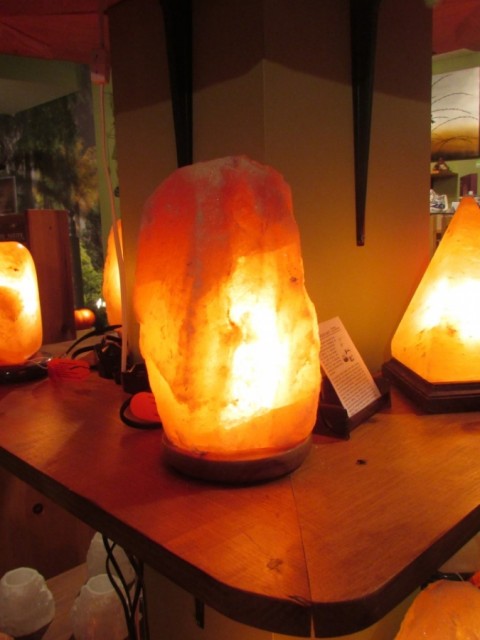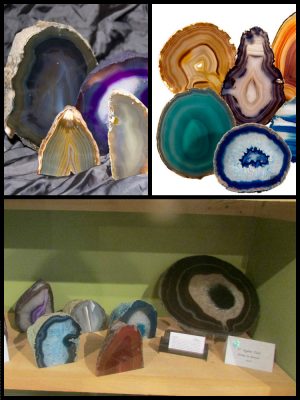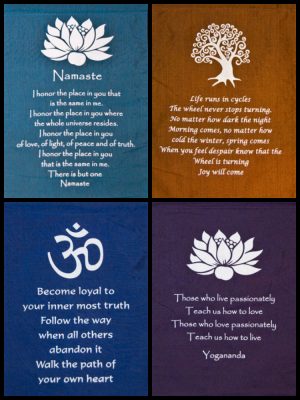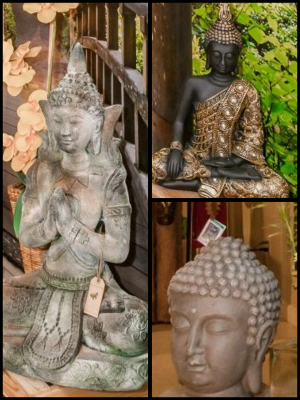Himalayan Salt Crystal Lamps
Why are Salt Lamps good for you?
As well as being beautiful, salt lamps release negatively charged ions. These negative ions neutralize positively charged ions given out by computers, televisions, power grids etc. Negatively charged ions create an environment that is similar to being near the sea or a waterfall and are what give the air in these areas that fresh feeling. The salt lamps should be lit at all times as they give off more negative ions that way.
By using Salt Crystal lamps, we can easily improve our environment, not only thorough the ionizing effects of the lamp but through the beautiful light they cast in a room! It is highly recommended to use them near a TV or computer, in a designated smoking room and an air-conditioned room.
Where do Salt Lamps come from?
Salt crystal lamps are made from salt crystal rocks. This salt crystal comes from the ancient seas and is now available in the foothills of the Himalayas in Pakistan. Salt crystals of this quality are rare.
How are Salt Lamps made?
Explosives and standard mining methods cannot be used when mining salt crystal rock; they must be hand crafted to retain their original structure. This means that every salt lamp is different in size, shape, colour and intensity. Each salt lamp is unique.
Where should I put my salt lamp?
- Near a television or computer
- Child’s bedroom – it also acts as a great nightlight!
- At the office
- Designated smoking room
- Massage room
- Meditation room
- Waiting room
- Exercise studio such as yoga or Pilates studios
What effect do the different colours have?
The variety of colour in the Salt Lamps is because of iron and copper in the salt. These naturally occurring elements can produce colours ranging from yellow to peach to orange to red. You can also achieve certain colours using tinted light bulbs.
Because of the connotations of crystals, salt lamps are perfect for use in colour therapy. There are some interesting theories when it comes to colour therapy. Each colour has its own energy pattern, which is why it separates out of white light into a rainbow when sent through a prism. The idea behind colour therapy is that the energy of each colour travels to whatever part of the body needs it. It’s worth a try!
Different therapists use colour in different ways. The following is an excerpt on Colour Therapy from www.colourtherapyhealing.com. Check their website for more information. The below is provided for information only and is not a paid endorsement.
Red is the lowest of the seven colours in the visible spectrum and is known as a “warm” colour. It is stimulating and energising; therefore, it is helpful for tiredness and lethargy.
On the psycho-spiritual level, orange relates to self respect. That is to say, having the ability to give ourselves the freedom to be ourselves and to respect our own boundaries and requirements and by the same token, having respect for the boundaries of others. Orange is the colour of creativity and we should give ourselves the space to have creative time just for us.
On the psycho-spiritual level, yellow relates to self worth. How we feel about ourselves and how we feel others perceive us. This is the area of the personality, the ego and the intellect and of self confidence.
Yellow is one of the three colours in the lower half of the visible spectrum. It is known as a “warm” colour and has a stimulating effect. It is the colour of the intellect and can be very helpful with study and where concentration is required.
Green is a balancing colour, in the middle of the visible spectrum. The higher three colours are known as the “cool” colours and are calming in effect; the lower three are known as the “warm” colours and have a stimulating effect. Green is the balance between these two.
When a therapist comes to the end of a colour therapy treatment, he/she will use green as a balancing colour at the end of a treatment.
Green is the colour of balance and harmony and can therefore be helpful in times of stress.
A tinted light bulb will need to be used to achieve a green effect.
What special care does my Salt Lamp need?
The salt lamp will absorb humidity and may deposit salt if they are not properly cared for. So keep your lamp turned on as much as possible to release any excess moisture. Cover your lamp with a plastic bag if you will not be using it.
Salt lamps are not designed to be used outside – they are meant for indoor use only.

